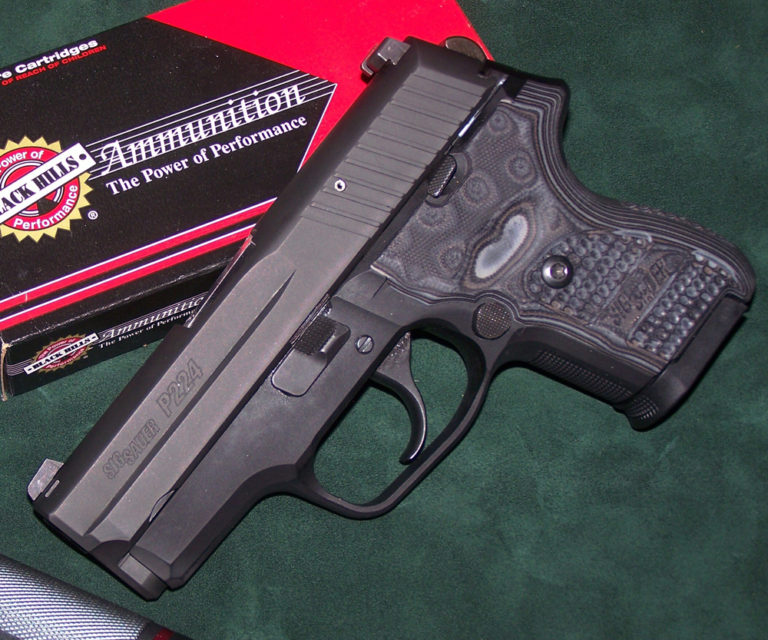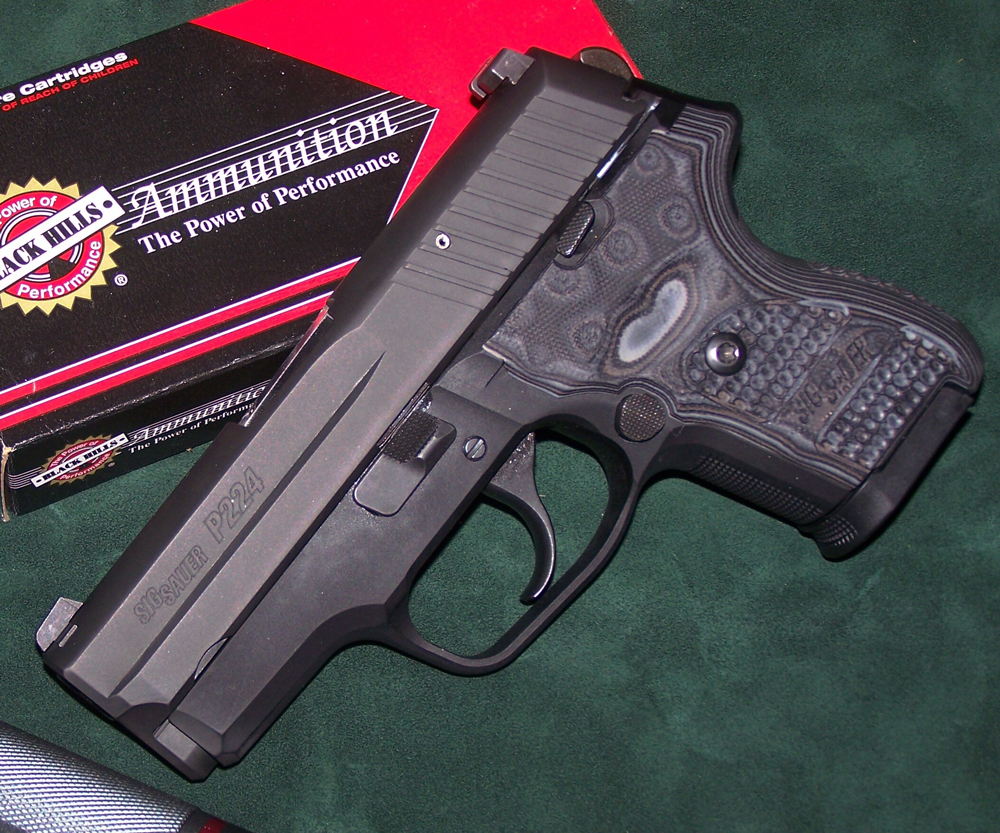

Probably the most commonly asked question among people looking for a defensive handgun and trying to decide which one to buy is “Which one is the best?”
The truth is, there is no such thing. The best gun and caliber combination will be what appeals to and fulfills an individual’s needs and capabilities, and of course, budget.
Here's a look at the pros and cons of three popular concealed carry calibers—9mm, 40 S&W and .45 ACP.
9mm
The 9mm is one of the most popular personal defense calibers on the landscape, and so many firearms are chambered for the round—big and small—that one can hardly count them. Ammunition has advanced over the years and there are many loads in various bullet weights ranging from 115 to 147 grains. It has plenty of energy, though the frontal mass is not as impressive as that of the .40- and .45-caliber loads.
Pros: Ammunition can be found just about anywhere in a variety of loads, from FMJs to hollowpoints and frangibles. It is accurate, with moderate recoil in all but the smallest, lightweight pistols, and there is less chance of over-penetration. The round offers a great balance between attacker-stopping power and it’s ability to be fired and easily controlled in a smaller to moderate-sized handgun, which is why this caliber is so popular.
Cons: Some shooters believe the 9mm is a bit on the light side for serious defensive work, and with lighter bullets there have been concerns about failure to penetrate through heavy, layered clothing or to stop a crazed, determined attacker.
.40 S&W
A cartridge that quickly became a winner is the .40 S&W, and it quickly proved itself as a fight stopper. Police agencies all over the map have adopted it for good reason, so it’s definitely a good choice for use by private citizens as well. I like the Remington Golden Saber 165-grain round best, but ammunition is offered with 135-, 155-, 180- and 200-grain bullets, too.
Pros: It moves a major class bullet out of the pipe at over 1,000 fps and hits like a hammer. Just about everybody makes a gun for this cartridge, including a couple of revolver makers.
Cons: It has a sharp recoil that may be tough to manage for some people, especially in smaller framed handguns.
.45 ACP
The .45 ACP is arguably king of the street calibers, and it has been winning close-quarters fights and military battles for more than a century. There are soldiers, cops and Texas Rangers who swear by it, along with legions of armed citizens who are still topside today because they had a .45 and used it. I prefer a 185-grain JHP and 230-grain FMJ rounds, stacked alternately in the magazine.
Pros: A variety of ammunition is available, and you can find it just about anywhere. Of even more importance in this day and age is it is affordable. Recoil is easily manageable in most guns, and a center-of-mass hit can body slam an attacker.
Cons: None that I can think of except where recoil in a smaller framed semi-auto might be too aggressive for some shooters. The slightly larger frame size of some .45s can also create more challenges to concealing without creating any imprint from beneath a shirt.
Editor's Note: This is an excerpt from the June 30, 2013 issue of Gun Digest the Magazine.

Next Step: Get your FREE Printable Target Pack
Enhance your shooting precision with our 62 MOA Targets, perfect for rifles and handguns. Crafted in collaboration with Storm Tactical for accuracy and versatility.
Subscribe to the Gun Digest email newsletter and get your downloadable target pack sent straight to your inbox. Stay updated with the latest firearms info in the industry.

![Best Concealed Carry Guns In 2025 [Field Tested] Wilson Combat EDC X9S 1](https://gundigest.com/wp-content/uploads/Wilson-Combat-EDC-X9S-1-324x160.jpg)


![Best 9mm Carbine: Affordable PCCs [Tested] Ruger Carbine Shooting](https://gundigest.com/wp-content/uploads/Ruger-Carbine-Shooting-100x70.jpg)
![Best AR-15: Top Options Available Today [Field Tested] Harrington and Richardson PSA XM177E2 feature](https://gundigest.com/wp-content/uploads/Harrington-and-Richardson-PSA-XM177E2-feature-100x70.jpg)

The caliber controversy will go on forever not because there isn’t on hand real actual evidence but because most of the people who write about it have little or no experience hunting live game with both big and small calibers for a valid comparison.
The lack of hunting experience is quite understandable because today big game hunting seasons are short with small bag limits and the expense of hunting a wide variety of animals is well beyond the financial capabilities of the average hunter.
In my own experience and my research into the past when bag limits were sometimes unlimited the data and my experience shows that bullet diameter is irrelevant. Bullet placement and penetration are paramount. A long heavy bullet will out penetrate a shorter lighter one no matter what caliber we are speaking off. There are numerous documented cases of elephant rifles failing to stop animals because of a combination of too slow a velocity coupled with a bullet that was not heavy enough for maximum penetration regardless of caliber.
U.S. Army testing in 1945 proved that even the most worshiped caliber the .45acp was a dud round when it came to combat penetration. At 35 yards the .45acp 225 grain bullet bounced off a WWII helmet. The 9×19 125 grain bullet penetrated the same helmet at an astonishing 125 yards. Recently Mike Venturino the gun writer had the .45acp fail at only 25 yards to penetrate a WWII type helmet, small wonder that for all but one European nation they all adopted the 9mm over the .45acp.
In real life hunting I have had the .45acp with the lighter 185 grain bullets fail miserably even at very close ranges.
As far as the 40 S&W is concerned it is one of the worst conceived pistol cartridges of all time. For the most part most of the guns so chambered were originally designed for the 9×19 which resulted in them failing mechanically with the harder kicking 40 S&W. Gun companies have attempted to strengthen slides and frames and even internal springs and parts with varying degrees of failure. This is really evident in the plasticky framed guns that were originally designed for the recoil of the 9mm. Ammo companies have even downloaded the heavy 180 grain bullets because the original hot loaded 180 grain loads left no air space in the cartridge which resulted in blow ups when the rounds suffered bullet set back during the feeding cycle. Combat Handguns magazine reported a number of years ago of a Browning High Power, Ruger, and Glock all blowing up with factory 180 grain loads.
The 40 S&W recoils more, holds less ammo, cost more to shoot and still today gives less service life than the 9mm and with proper 9mm loads the 40 is no more deadly than the 9mm.
Pistolero magazine in the1980’s shot barn yard pigs in Mexico at point blank range off the end of the muzzle and found absolutely no difference in killing power between the .45acp, 9mm, .38 special and what is even more surprising the .357 magnum proving how anemic pistol calibers really are no matter what caliber you use.
My last shot with a 9×19 with 125 grain Remington hollow point was exactly one shot behind the shoulder of a 170 LB. White Tail deer which dropped over dead and never moved. How much more could we ask of any pistol cartridge.
Also to consider is the fact that shooting a milder recoiling gun like the 9×19 may result in longer parts life as well. The increasing use of the brittle MIM cast parts is very troubling as multitudes of graphic pictures showing parts breakage abound on the internet, some posted by gunsmiths showing MIM cast part failures.
In conclusion for the average gun owner the 9×19 which is milder recoiling, cheaper to shoot, and with modern ammo it takes a back seat to none of the other commonly used auto pistol cartridges, it just may be the ideal defense handgun cartridge.
That is one of the best rebuttals on “bigger is better” I’ve ever read! Well explained and spot on the important points. I’ve always been amazed that people keep repeating the …”9 aint enough mantra” when its really all about shot placement .. the most commonly used caliber in handgun deaths that I see and read about is the lowly .22